Aestheticism, Evil, Homosexuality, and Hannibal
Aestheticism, Evil, Homosexuality, and Hannibal
I f Oscar W ilde Ate People
Geoff Klock
LEXINGTON BOOKS
Lanham Boulder New York London
Published by Lexington Books
An imprint of The Rowman & Littlefield Publishing Group, Inc.
4501 Forbes Boulevard, Suite 200, Lanham, Maryland 20706
www.rowman.com
Unit A, Whitacre Mews, 26-34 Stannary Street, London SE11 4AB
Copyright 2017 by Lexington Books
All rights reserved . No part of this book may be reproduced in any form or by any electronic or mechanical means, including information storage and retrieval systems, without written permission from the publisher, except by a reviewer who may quote passages in a review.
British Library Cataloguing in Publication Information Available
Library of Congress Cataloging-in-Publication Data Available
ISBN 978-1-4985-4848-9 (cloth : alk. paper)
ISBN 978-1-4985-4849-6 (electronic)
 The paper used in this publication meets the minimum requirements of American National Standard for Information SciencesPermanence of Paper for Printed Library Materials, ANSI/NISO Z39.48-1992.
The paper used in this publication meets the minimum requirements of American National Standard for Information SciencesPermanence of Paper for Printed Library Materials, ANSI/NISO Z39.48-1992.
Printed in the United States of America
This book is dedicated to Dr. Brady Berman, my own sensitive psychopath.
The bibliography, though, belongs to Maureen Matarese.
Epigraph
(nothing but music from this point on)
Amazon Prime subtitles to Hannibal , Season 3, Episode 1
Contents
I keep saying Bryan Fullers Hannibal , but Hannibal , like any TV show or movie, is a big production and a lot of the things you will see me attribute to Fuller out of linguistic convenience might be more accurately attributed to someone in the writers room, or the director, or the cinematographer, or the composer, or the set, or food designer, even though Fuller seems unusually involved: production designer Matthew Davies said Bryan grooms every script, polishes every line of dialogue and is exacting when it comes to things like furniture and flowers.
Thanks to Lindsey Porambo, Maureen Matarese, Jennifer Tomaiolo, Pat and Tom Fish, Mitch Montgomery, Jason Schneiderman, Eric Shorey, Tom Blunt, Ben Haimowitz, Tali Noimann, Nick Marino, David Kurfirst, Chris Zumtobel, Dylan A. Smith, and my parents Don and Diane Klock. Parts of this book were presented at Think Olio and it was in part funded by BMCCs faculty publication grant.
TEXT PERMISSION
Excerpts from Alighieri, Dante. The Inferno of Dante: A New Verse Translation . Translated by Robert Pinsky Farrar, Straus and Giroux, 1994. Farrar, Straus, and Giroux, LLC, 1994. Reprinted with permission.
Excerpts from Hannibal season 1 2013 Chiswick Productions LLC. All rights reserved. Reprinted by permission of Gaumont Television USA LLC.
Excerpts from Hannibal season 2 2014 Chiswick Productions LLC. All rights reserved. Reprinted by permission of Gaumont Television USA LLC.
Excerpts from Hannibal season 3 2015 Chiswick Productions LLC. All rights reserved. Reprinted by permission of Gaumont Television USA LLC.
Excerpts from Paglia, Camille. Sexual Personae: Art and Decadence from Nefertiti to Emily Dickinson. New York: Vintage, 1990. Yale University Press, 1990. Reprinted with permission.
Excerpts from Wright, Charles. Buffalo Yoga Coda III. Buffalo Yoga, 3133. New York: FSG, 2004. Farrar, Straus, and Giroux, LLC, 2004. Reprinted with permission.
Girls on the Run by John Ashbery. Copyright 1999 by John Ashbery. Reprinted by permission of Georges Borchardt, Inc., on behalf of the author. All rights reserved.
Aperitif is a small drink of liquor used to stimulate the appetite, but the word derives from the Latin aperire, meaning to open. and this is Fullers aim, to make his mark. A design is a plan for a work of art, but it is also a word used for hostility and aggressionto have designs on someone elses wife, for example, is to have intentions that are less than pure. In the word design, art and evil, the themes of the show, are immediately linked.
Alana Bloom says to Hannibal For convenience [the psychiatric community] term you a monster (3.8). In the fourteenth century monsters referred to deformed animals, thought to be warnings from the gods, and so the word monster is related to monitorsomething or someone that provides a warning. Monster is also, for the same reason, at the root of demonstrateto teach a lesson. Will says, Hannibal has a certain personality style we can all learn from. In moderation of course (2.12). In its murder scenes Hannibal links art and evil, and this is a major part of the mark, the lesson, Fuller aims to make with his depiction of one of the great monsters of popular culture. Fullers Hannibal is a work of art about why art matters, and what evil has to do with it. This lesson may also be a warning.
The devil is in the details says Hannibal (1.1), and this book will be focusing on the details of Fullers show. Why that is a good idea is captured by a conversation between Hannibal and his therapist Bedelia about Will Graham:
Hannibal: | He realized early on that he saw things differently than other people, felt things differently. |
Bedelia: | So did you. |
Hannibal: | I see myself in Will. |
Bedelia: | Do you see yourself in his madness? |
Hannibal: | Madness can be a medicine for the modern world. You take it in moderation, its beneficial. |
Bedelia: | You overdose and it can have unfortunate side effects.Hannibal: Side effects can be temporary. They can be a boost to our psychological immune systems to help fight the existential crisis of normal life. (1.11) |
Madness in moderation is what art does, and it is also what the study of art does, and this study will treat Hannibal as a work of art, one best understood by looking closely at the details. Lars Von Triers Dogville , a lush production where every surface is bejeweled, celebrates aestheticism. Hannibal investigates aestheticism. As Mason Verger says, I want to understand Hannibal Lecter to better understand myself (3.4): Hannibal is a window into who we are. And like Mason Verger, we might be monsters.
ART IS NOT ABOUT SOMETHINGIT IS THAT SOMETHING ITSELF
The Social Justice Activist movement has a lot of folks looking at works of art in terms of what values it promotes, its imagined effects on viewers, good because it brings Occupy Wall Street and class issues, often hidden in American life and popular culture, to the fore? Or is it bad because it asks us to sympathize with a legacy billionaire punching homeless people in the face in its final act? To what extent is supporting art made by bad peoplesuch as Roman Polanski, Woody Allen, R. Kelly, or Bill Cosbysupporting injustice?
A product of the late nineteenth century, the idea of art-for-arts sake, also known as aestheticism, is the idea that good art doesnt do anything, it simply is. It stands on its own, unconnected to the biography of its creator, or any petty message. A painting by Mark Rothko or Jackson Pollocka panel of color barely graded, or wild splashes of coloris a beautiful object, a sensuous and unique experience, and asking what it means, and especially thinking you will understand what it means by reading a biography of its creator, is kind of missing the point. As Samuel Beckett puts it about James Joyce, art is not about something; it is that something itself.
On the subject of art, and this way of looking at art, we will have three main guides through Fullers Hannibal . First, Oscar Wilde, the late nineteenth-century author of the gothic horror novel The Picture of Dorian Gray , and The Importance of Being Earnest , she is the person best equipped to understand the dark side of aestheticism.
Next page
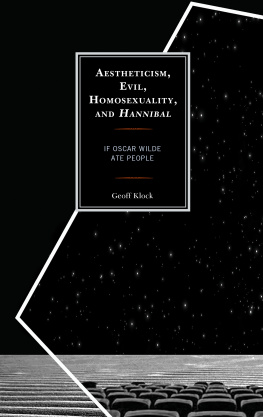
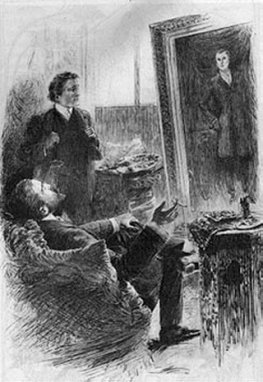

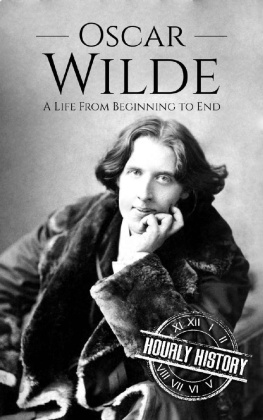
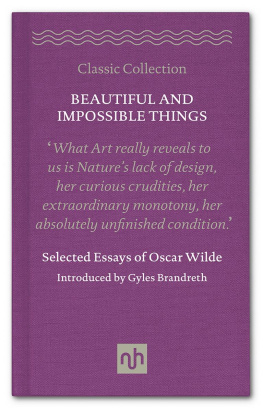

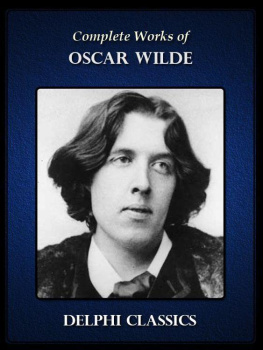
![Wilde Oscar - The secret life of Oscar Wilde: [an intimate biography]](/uploads/posts/book/228457/thumbs/wilde-oscar-the-secret-life-of-oscar-wilde-an.jpg)
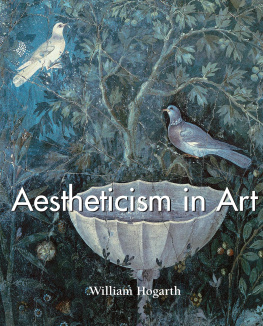
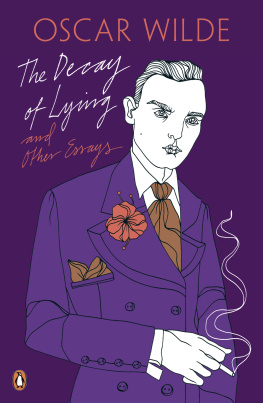
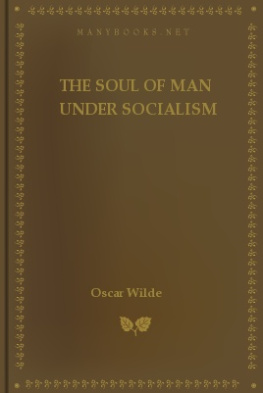
 The paper used in this publication meets the minimum requirements of American National Standard for Information SciencesPermanence of Paper for Printed Library Materials, ANSI/NISO Z39.48-1992.
The paper used in this publication meets the minimum requirements of American National Standard for Information SciencesPermanence of Paper for Printed Library Materials, ANSI/NISO Z39.48-1992.